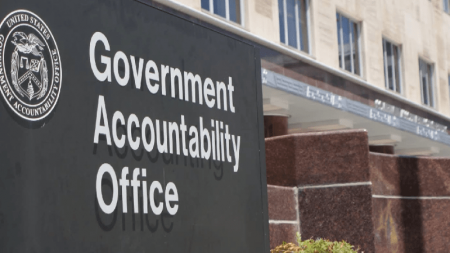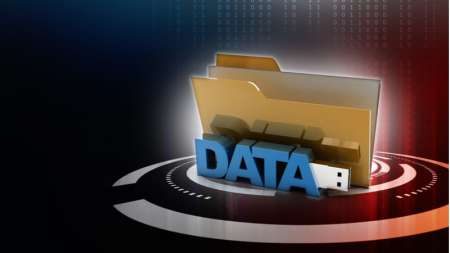U.S. military officials said today that for responding swiftly and effectively during crises real-time data is now as critical as boots on the ground — and that’s why military services are making data management a top priority, aiming to enable smarter decisions, sharper resource deployment, and clearer communications when it matters most. […]
Rep. Morgan Luttrell, R-Texas, is calling out the Department of Defense (DoD) and Department of Veterans Affairs (VA) for ongoing failures to seamlessly transfer medical data for warfighters transitioning from active duty to veteran status. […]
When the Department of Government Efficiency (DOGE) comes knocking on agency doors for data and contracting information, how can agencies best be prepared to respond with a quick turnaround time? […]
Chief data officers (CDOs) at the Office of Personnel Management (OPM) and Nuclear Regulatory Commission (NRC) said they are modernizing their agencies’ use of artificial intelligence and cloud computing. […]
Federal chief data officers (CDOs) are succeeding in meeting their goals but face ongoing challenges, including a lack of clarity in their roles and insufficient support from leadership, a new survey reports. […]
When embarking on a digital transformation journey to the cloud, tech experts on Tuesday afternoon recommended that the first step should be migrating all of the data into the cloud environment. […]
Highly Assured Data-Centric Security (HADCS) goes beyond traditional perimeter-based security models by shifting the focus to securing the data itself, explained Keith Strini, the chief technical strategist for the Department of Defense and intelligence community at Dell Technologies. […]
The Department of the Navy has unveiled version 2 of its Information Superiority Vision (ISV 2.0), building on the department’s 2020 IT modernization vision by “refining the Navy’s data management.” […]
The Government Accountability Office (GAO) credited the Federal government’s Thrift Savings Plan (TSP) for solving technical issues that participants faced while using its latest online platform when it launched in 2022, but also cautioned in an Aug. 1 report that the Federal Retirement Thrift Investment Board (FRTIB) “needs to greatly improve” oversight of TSP acquisition management and contractor oversight going forward. […]
The Departments of Labor (DoL) and Treasury announced a partnership to expand unemployment insurance (UI) fraud fighting tools to states through a data-matching system. […]
Federal officials on Thursday shared that the recent explosion of interest in AI technologies is also fueling better data management across the Federal government, and emphasized that you can’t have one without the other. […]
In its first markup in 31 years, the House Administration Modernization Subcommittee voted Thursday to approve the Modernizing the Congressional Research Service’s (CRS) Access to Data Act. […]
House and Senate committee leaders on Sunday evening unveiled a discussion draft of their latest effort to create a national data privacy law via the American Privacy Rights Act of 2024, which notably features provisions that would allow people to opt out of the use of their data for creating algorithms that could impact a host of major life decisions. […]
President Biden plans to sign an executive order (EO) today that aims to protect Americans’ sensitive data from “countries of concern,” the White House announced in a Feb. 28 fact sheet. […]
The Federal Chief Data Officers Council (CDO Council) has appointed Kirsten Dalboe as council chair and Robert King as vice-chair, according to a Jan. 25 LinkedIn post. […]
The Federal Chief Data Officers (CDO) Council is looking for information on synthetic data generation as it works to develop a best practice guide, according to a request for information (RFI). […]
A recently released report from the Department of Defense Office of Inspector General (DoD OIG) finds that DoD doesn’t have enough accountability over devices that collect biometric data. […]
With the increasing use of data across the U.S. by private and public entities, a new report from the Information Technology and Innovation Foundation (ITIF) warns that the U.S. is headed towards more “data silos” which can inhibit the effectiveness of technological innovation. […]
The Department of Defense (DoD) cannot rely on the data in the COVID-19 Registry to make public health and clinical care decisions concerning the pandemic because it’s incomplete, inaccurate, or unrepresentative of the DoD workforce, the agency’s watchdog said in a July 7 report. […]
As the COVID-19 public health emergency (PHE) is set to end next week on May 11, Centers for Disease Control and Prevention (CDC) Director Rochelle Walensky warned that this also means the end of data collection and sharing efforts that many Americans have come to expect from the agency on pandemic-related data. […]
The perfect data management approach doesn’t exist, according to government experts. And because nobody’s perfect, they advised organizations to stop striving for perfection in data management and instead settle for “good enough” to reach effectiveness. […]
March 31 – which for years has been marked in the technology community as World Backup Day – also qualifies as a great reminder to governments, businesses, and citizens that putting into place correct data backup strategies is a strong front-line defense against the scourge of ransomware attacks. […]
The U.S. National Science Foundation (NSF) and five other Federal government agencies have announcedcreation of a prototype version of an integrated data and knowledge infrastructure program that they say will form the basis of a far-reaching “open knowledge network.” […]
The Department of Veterans Affairs (VA) has developed more than 1,400 recommendations for modernizing and realigning its health care infrastructure, but a new report from the Government Accountability Office (GAO) is finding gaps in the data VA used to inform the recommendations. […]
MITRE Corp., which operates Federally-funded R&D centers focusing on science and tech issues, said in a new survey this week that the Federal government would benefit from further empowering its chief data officers. […]
There is a lot of data to go around at the Department of Defense (DoD), but one of the biggest challenges the agency faces is that not everybody has access to the data that they need, a Pentagon official said this week. […]
The U.S. Department of the Army has emphasized the importance of aggregating data into a virtualized and centralized capability to meet mission imperatives and the needs of its civilian and military workforce, according to an agency official. […]
The role that data plays in meeting the demands of the Biden administration’s agenda for enhanced diversity, equity, inclusion, and accessibility (DEIA) policies is substantial, but only part of the picture, Federal experts said during a Feb. 21 GovLoop webinar. […]
A new report by the Government Accountability Office (GAO) finds that the U.S. Department of State is not able to readily use International Traffic in Arms Regulations (ITAR) data to assess trends or risks related to the export of defense services. […]
The Defense Logistics Agency (DLA) recently stood up a new data management division within the Office of the Chief Data and Analytics Officer (CDAO) that aims to offer “invaluable insights” going forward, CDAO Lindsey Saul said. […]























